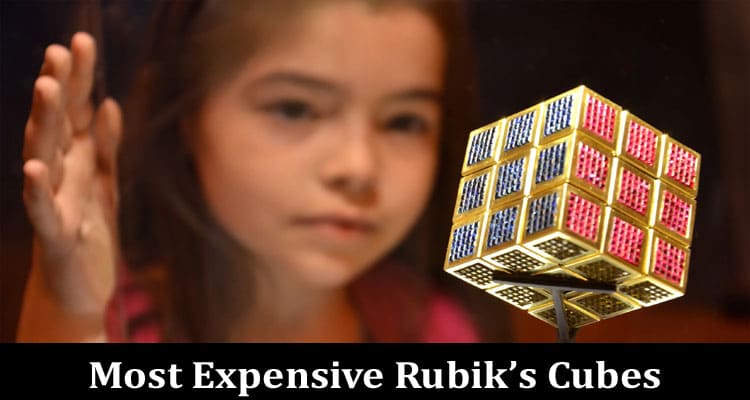One of the most recognizable and iconic toys in history is the Rubik’s Cube. Since its invention in 1974, it has sparked the curiosity of individuals all over the world, establishing itself as a mainstay of popular culture and a cherished puzzle for countless generations.
But the Rubik’s Cube is much more than just a straightforward puzzle for some people. It is a valuable collectible, with some extremely rare versions selling for thousands of dollars at auction. We’ll delve into the world of Rubik’s Cube collecting in this blog post and learn about the most expensive Rubik’s Cubes ever produced.
For anyone interested in beginning or growing their collection, we’ll offer insights and advice on everything from the evolution of the cube’s designs to the variables that affect their value.
Let’s investigate the most priceless Rubik’s Cubes in history, whether you’re a seasoned collector or a newcomer to the hobby.
Introduction to Rubik’s Cube Collectors
The Rubik’s cube, created in 1974 by Hungarian sculptor and architecture professor Ern Rubik, has grown to be one of the most well-known and recognizable puzzles in the entire world.
Over the years, the Rubik’s cube has fostered a thriving community of collectors and enthusiasts who value its design, background, and cultural significance.
Rubik’s cube collectors look for rare and unique examples of the puzzle, like vintage models and ones that were made just for them. They often share their knowledge and love of this well-known toy at online forums, trade shows, and other events.
This guide will introduce you to the fascinating world of Rubik’s cube collecting, whether you are an experienced collector or are just beginning to explore the world of Rubik’s cubes.
The Evolution of Rubik’s Cube Designs
The Rubik’s cube was initially created with a straightforward design that included stickers on each face that displayed various colors.
However, as the popularity of solving the cube and the demand for it increased, producers began developing new designs to make it more aesthetically pleasing.
The cube was given a glossy finish in the 1980s, and the stickers were changed out for plastic ones that were molded onto the cube. This improved its durability as well as its aesthetic appeal.
With the introduction of the Rubik’s Magic, a cube with a different mechanism that allowed it to be transformed into various shapes, the Rubik’s Cube received a new twist in the 1990s.
New designs for the cube were made possible by Rubik’s Magic, which sparked fresh interest in it.
The Most Valuable Rubik’s Cubes of All Time
The “Magic Cube” prototype, which Rubik himself developed in 1975, is one of the most expensive Rubik’s Cubes.
Because it was the original version of the now-iconic puzzle and was hand-made by Rubik, this cube is special.
There are only a few of these prototypes left, and they are among the most expensive and sought-after Rubik’s Cubes in existence.
The “First Edition” Rubik’s Cube, which Ideal Toys produced in 1980, is another pricey model. One of the rarest and most sought-after Rubik’s Cubes in existence, this one was the first to be mass-produced.
These cubes, which were produced in very small quantities, are highly prized by puzzle collectors and enthusiasts.
The “Vintage Cube” series, which was created in the early 1980s and is now regarded as a highly collectible Rubik’s Cube due to its scarcity and retro appeal, is another pricey variety.
Additionally, there are several uncommon and one-of-a-kind cubes that have been altered or customized by artists, which can also be very expensive.
These most valuable Rubik’s Cubes, whether you’re a collector or just a fan, are proof of the puzzle’s enduring appeal and cultural significance.
Therefore, it might be wise to hold onto one of these uncommon cubes if you come across one.
How to Start Collecting Rubik’s Cubes
The search of Rubik’s Cube collections can be enjoyable and rewarding. To get you started, follow these steps:
- Learn about various Rubik’s cube varieties: There are numerous varieties of Rubik’s cubes, including the traditional 3×3 cube as well as smaller 2×2 and 4×4 cubes as well as larger 5×5 and 6×6 cubes.
- Establish a budget: Setting a budget and adhering to it are crucial because collecting Rubik’s Cubes can be a costly hobby.
- Purchase your initial Rubik’s cube: Start with a standard 3×3 cube and progress to larger and more complex ones as you gain experience and knowledge.
- Practice solving the cube: The secret to being a successful Rubik’s Cube collector is knowing how to solve the cube, so practice solving it. Find a solution method that suits you best by experimenting with a few.
- Join a community for Rubik’s Cube: Join Rubik’s Cube collecting forums or social media groups to learn more about the hobby, meet other collectors, and share your own collection.
- Participate in Rubik’s Cube events and competitions: Meet other collectors and view some of the rarest and most distinctive Rubik’s Cubes.
- Organize your collection: As your collection expands, it’s critical to keep it well-maintained and organized. To keep your cubes safe for a long time to come, think about using a display case or protective packaging.
Final Thoughts
In conclusion, the Rubik’s cube has developed into a collectible item for puzzle enthusiasts since its creation in 1974 and has come a long way since then.
The market for pricey Rubik’s cubes is booming, with options ranging from limited edition models to specially created cubes.
The true value of these collectibles lies in their distinctive design and historical significance, even though some of the most expensive cubes can fetch prices in the thousands of dollars.
The world of Rubik’s cube collecting is full of exciting discoveries and chances to expand your collection, whether you’re an experienced collector or just getting started.
Also Read: Profitable Home Based Earning Ideas – Explore Options!






